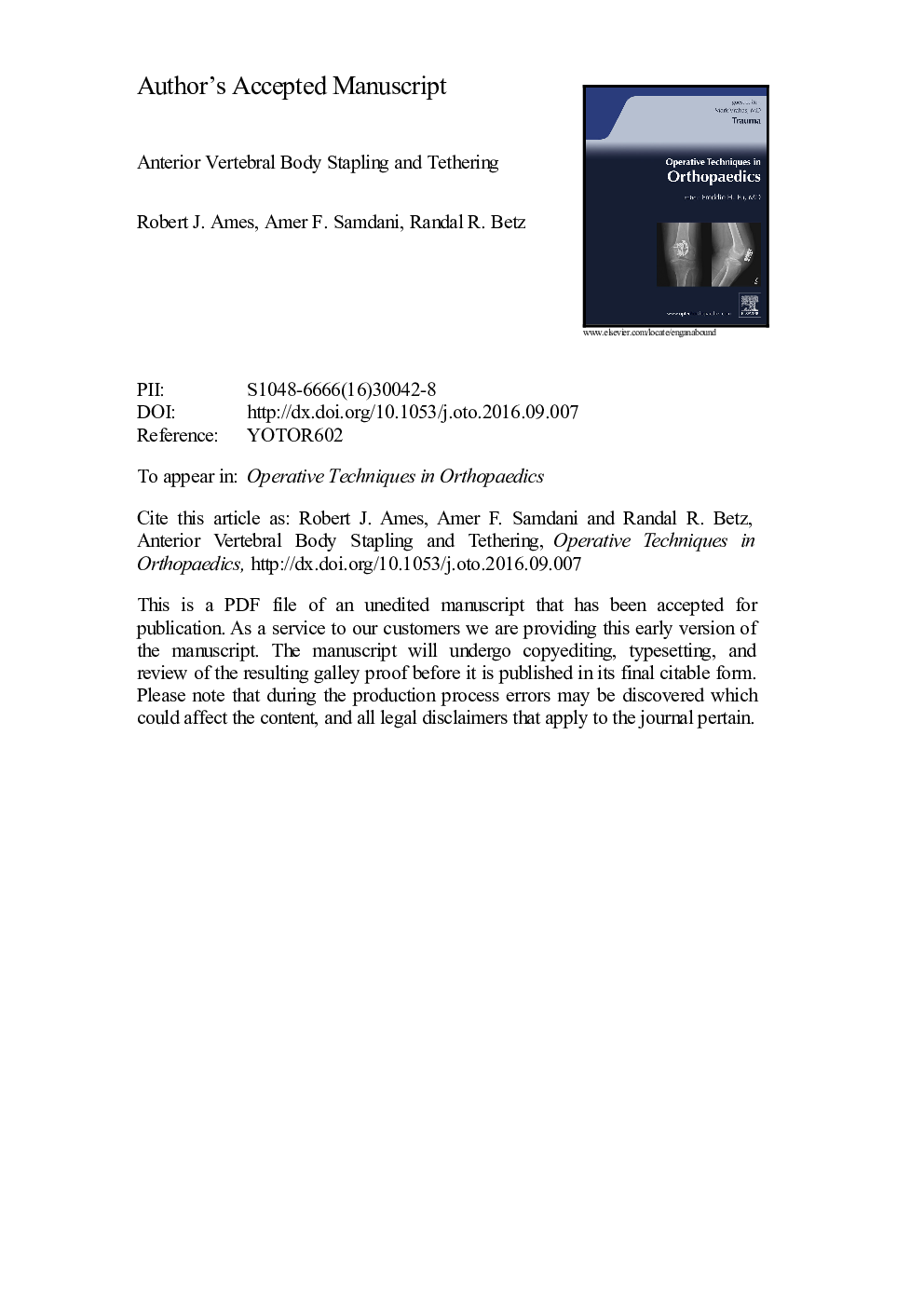| Article ID | Journal | Published Year | Pages | File Type |
|---|---|---|---|---|
| 5710862 | Operative Techniques in Orthopaedics | 2016 | 34 Pages |
Abstract
The current standard of care for skeletally immature patients with progressive scoliosis measuring >25° is a thoracolumbosacral orthosis. Recent evidence has established the efficacy of bracing in halting curve progression in patients with curves measuring 20°-40°. However, issues surrounding psychosocial impact, compliance, and the efficacy of bracing in larger curves remain. In patients with significant growth remaining, anterior growth modulation surgery has been established as a unique and promising alternative. Using a patient׳s remaining growth, vertebral body stapling and vertebral body tethering (VBT) exert compressive forces along the convexity of the deformity to wield control over coronal curvatures. Extensive preclinical studies have established the biomechanical foundation for stapling and tethering, and while clinical reports are still few, initial data have shown these procedures to be a promising treatment option in select patients. Vertebral body stapling is best employed for smaller, more flexible curves in younger patients, primarily as an alternative to bracing (thoracic curves <35° and lumbar curves <45°). Indications for VBT are still expanding as we gain more experience with the procedure. VBT is currently being employed in patients with growth remaining in flexible thoracic curves measuring 35°-70° and lumbar curves measuring 30°-70°. At this time, neither treatment is currently approved by the United States Food and Drug Administration for use in treating idiopathic scoliosis. Long-term studies are needed to establish the efficacy of these procedures as a primary treatment option in this patient population.
Related Topics
Health Sciences
Medicine and Dentistry
Orthopedics, Sports Medicine and Rehabilitation
Authors
Robert J. MD, Amer F. MD, Randal R. MD,
